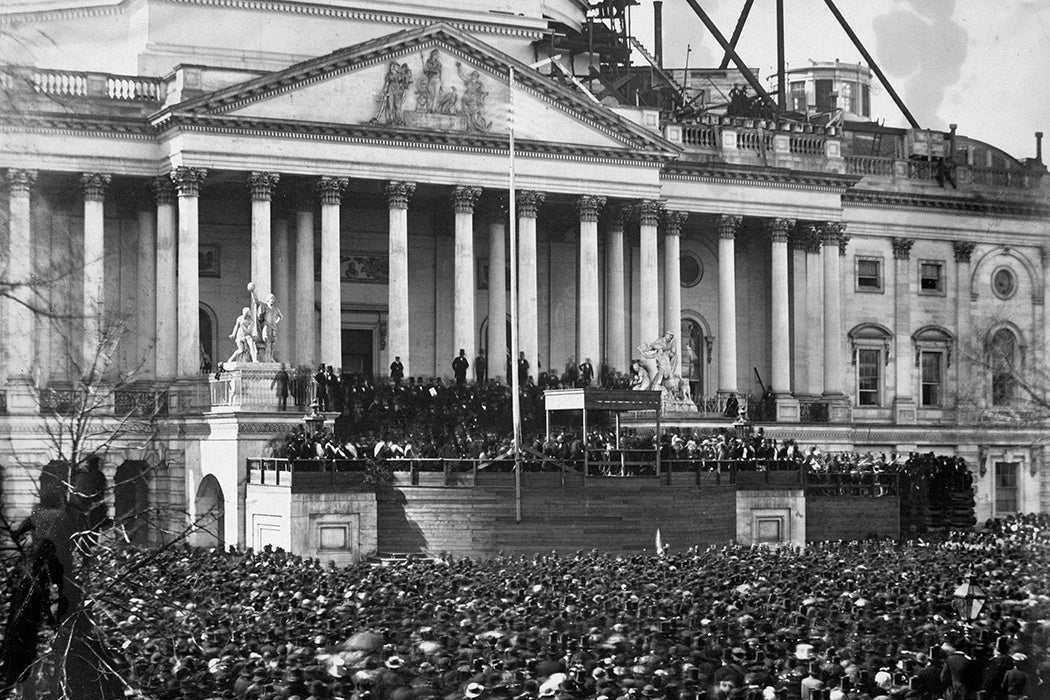You may think things are rough now, but many would argue the most tumultuous presidential transition in American history took place over a hundred years ago. A new Republican president-elect was taking over from an establishment government that seemed unable to keep a fraying nation together. He had garnered only about 40 percent of the popular vote, with the rest divided among a long list of opponents. Entire regions had rejected him resoundingly. During a bitterly-fought campaign, a cadre of militant supporters had marched through towns and cities, and were accused of intimidating opponents.
Who was this newly-elected president? Abraham Lincoln in 1860.
Taking over for the feckless Democrat James Buchanan, Lincoln rode his new party to victory. Yet before he could even be inaugurated, South Carolina had seceded from the Union, and soon other slave states would follow. Secession fever was ignited by disdain for and fear of the president-elect.
Historians have long parsed the months of the 1860-61 transition. Some have suggested that Lincoln lacked knowledge of the South, was a highly partisan Republican at odds with a strongly Democratic region, and was tied to a strong anti-slavery viewpoint, making compromise impossible.
Southern secessionists ratcheted up the rhetoric. Southern newspapers editorialized that the new president was opposed to slavery because he himself had black ancestry. Lincoln downplayed the tumult, telling worried supporters, “There really is no crisis except an artificial one.” And in his inaugural address, Lincoln proclaimed about the recalcitrant southerners that “we are not enemies, but friends.”
Some argue that the anger of the 1860 campaign ignited war and secession talk. One prominent secessionist leader proclaimed the movement was instigated by Lincoln’s election. Lincoln’s oft-quoted phrase that the country could not survive half-slave and half-free frightened southern leaders.
Lincoln, however, won by a large Electoral College margin as opposition was splintered. At the time, presidential candidates did not engage directly in campaigns, but Lincoln had strong surrogates. Among them were the Wide Awakes, a para- military group, who marched through cities and smaller towns in support of the Republican ticket. Notes one historian: “the movement’s dangerous use of militarism for political purposes unintentionally bled into powerful cultural agitation that terrified southerners.”
Weekly Newsletter
Historian James MacPherson notes that Lincoln’s principles, forbidding the extension of slavery in the territories while preserving the Union, generated fierce opposition. William H. Seward, Lincoln’s Secretary of State and once chief political rival, sought compromises that would stave off conflict, including a proposal to allow slavery through the southern portion of the Western territories. Lincoln would have no part in it, writing Seward: “Entertain no proposition for a compromise in regard to the extension of slavery.”
Beset by a contentious election and a less-than-harmonious presidential transition, Lincoln’s hope that the secessionist movement was a passing phase was dashed when rebels fired upon Fort Sumter in Charleston Harbor, little more than a month after his inauguration.
The question remains whether Lincoln’s election and presidential transition fed the polarization or whether he simply encountered overwhelming historical currents that swept the nation into bloody Civil War.







